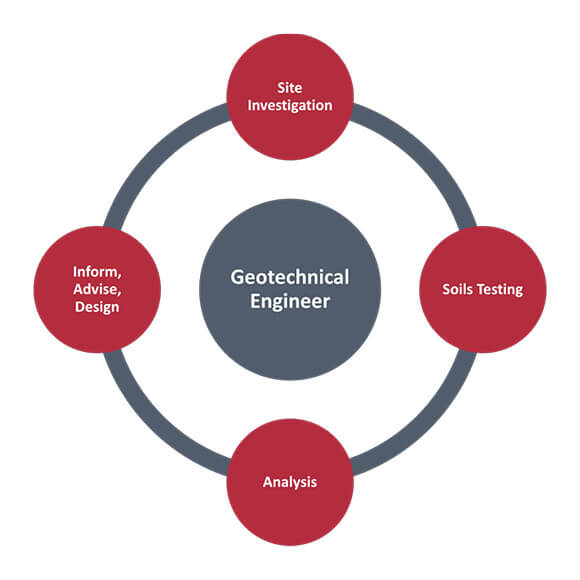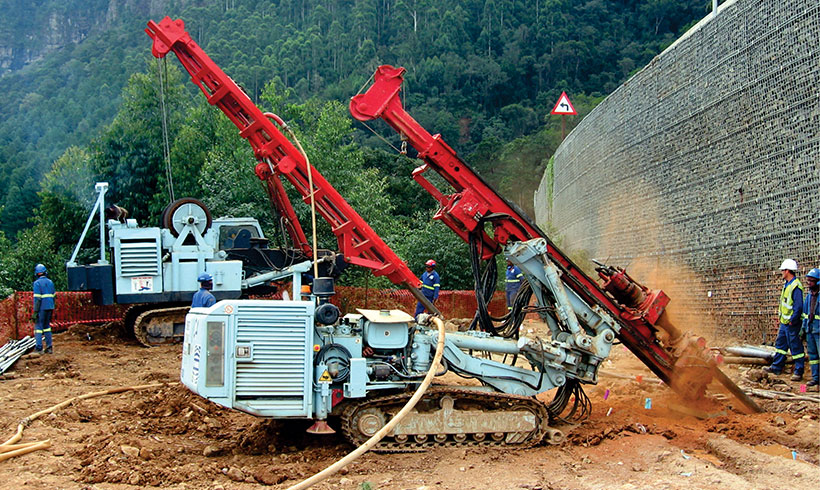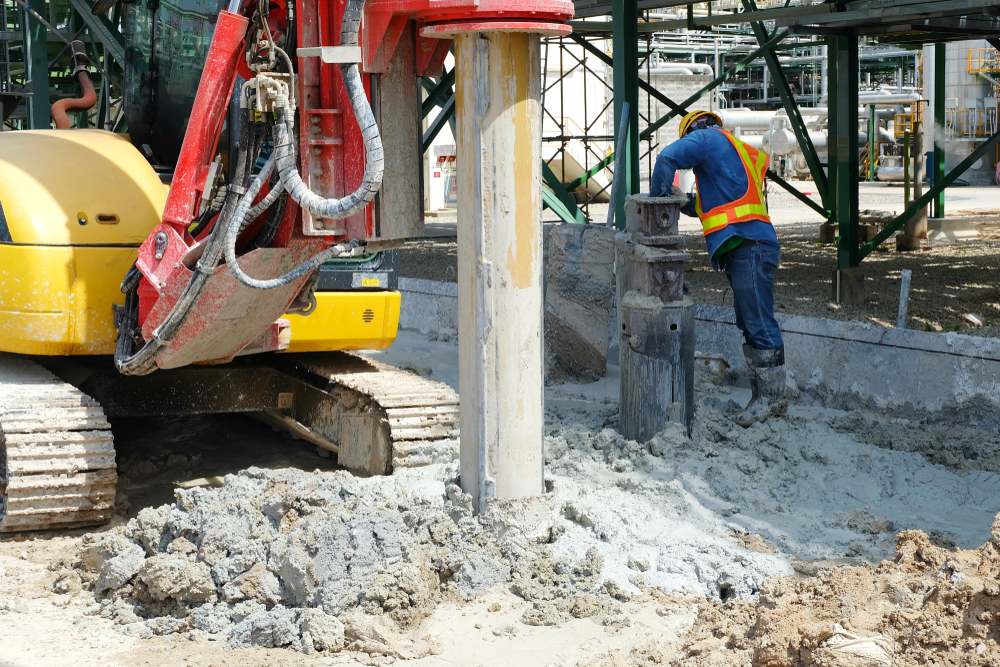7 Simple Techniques For Geotechnical Engineering For Construction Projects
Wiki Article
The Best Strategy To Use For Geotechnical Engineering For Construction Projects
Table of Contents8 Simple Techniques For Geotechnical Engineering For Construction ProjectsGetting My Geotechnical Engineering For Construction Projects To WorkHow Geotechnical Engineering For Construction Projects can Save You Time, Stress, and Money.The 7-Second Trick For Geotechnical Engineering For Construction ProjectsThe Single Strategy To Use For Geotechnical Engineering For Construction ProjectsHow Geotechnical Engineering For Construction Projects can Save You Time, Stress, and Money.About Geotechnical Engineering For Construction Projects
and Kovacs, W. (1981 ), An Introduction to Geotechnical Design, Prentice-Hall, Inc. Deep Scan Tech (2023 ): Deep Check Technology uncovers surprise structures at the website of Denmark's highest structure. "Geofrost Coring". GEOFROST. Gotten 20 November 2020. Han, Jie (2015 ). Principles and Technique of Ground Improvement. Wiley. ISBN 9781118421307. RAJU, V. R.Ground Enhancement Technologies and Instance Histories. Singapore: Research Study Posting Providers. p. 809. ISBN978-981-08-3124-0. Ground Enhancement Principles And Applications In Asia. Pariseau, William G. (2011 ). Layout evaluation in rock technicians. CRC Press. Hegde, A.M. and Palsule P (Geotechnical Engineering for Construction Projects).S. (2020 ), Performance of Geosynthetics Reinforced Subgrade Subjected to Repeated Vehicle Loads: Experimental and Mathematical Research Studies.
Cengage Understanding, Stamford, 666 p. Atkinson, J., 2007. The technicians of dirts and structures. The Observational Method in ground design concepts and applications.
Geotechnical Engineering For Construction Projects Things To Know Before You Get This
Laboratory and area screening plays an important function in this process. By removing examples from the earth's subsurface and applying a collection of examinations, geotechnical engineers can predict the practices of soil layers and evaluate their viability for numerous building endeavours. The significance of geotechnical design in civil engineering can not be overemphasized, attributable to several factors: The first action in any type of geotechnical research involves determining the dirt type at the building website.
Recognizing these features makes sure that just appropriate dirt types are selected for the advancement, therefore averting prospective architectural failures. The foundation functions as the bedrock of any kind of building job. Picking the appropriate foundation kind is a choice that depends upon the thorough analysis provided by geotechnical design. This makes sure the long life and security of structures by fitting the lots they will bear.

Geotechnical website examination is a vital action in the preparation and implementation of any type of construction project. It involves the collection and analysis of data associated with the physical residential properties of dirt and rock underneath a suggested building and construction website. This info is crucial for the layout and building and construction of risk-free, steady, and sustainable frameworks.
Not known Details About Geotechnical Engineering For Construction Projects
In this blog, we will certainly dig right into the value of geotechnical site examination, its different parts, and exactly how it benefits building and construction jobs. Geotechnical site examination, also called subsurface expedition, involves a collection of activities focused on figuring out the soil, rock, and groundwater problems at a construction website. The primary goals are to identify potential geotechnical hazards, analyze the design homes of subsurface materials, and give suggestions for the design and construction of structures, maintaining wall surfaces, and various other structures.The workdesk research aids in recognizing prospective geotechnical issues and preparing the subsequent fieldwork. This entails observing the topography, water drainage patterns, existing frameworks, plants, and any type of indications of instability or erosion.
Geotechnical Engineering For Construction Projects Things To Know Before You Get This
Superficial test pits are excavated to directly observe and example the soil and rock. This method is useful for researching the upper layers of the subsurface and recognizing near-surface threats. Non-invasive geophysical techniques, such as seismic refraction, ground-penetrating radar (GPR), and electrical resistivity tomography (ERT), are utilized to map subsurface conditions and detect abnormalities.Soil and rock samples gathered throughout the area investigation are subjected to lab screening to identify their physical and mechanical buildings. These tests supply important data for geotechnical analysis and layout.
The primary benefit of geotechnical site investigation is making certain the safety and stability of structures. By comprehending the subsurface problems, designers can make foundations and other structural aspects that can hold up against the loads and environmental forces they will go through. This lessens the danger of negotiation, home decrease, and architectural failing.
The Basic Principles Of Geotechnical Engineering For Construction Projects
Understanding dirt features can guide the selection of excavation methods, dewatering approaches, and ground renovation steps. This ensures effective and safe building and construction methods. Geotechnical site investigations are often called for by developing codes and policies. Abiding by these requirements makes certain conformity with lawful and safety and security criteria, preventing potential legal liabilities and task delays.This information is very useful for project supervisors, architects, and service providers in developing sensible schedules, budget plans, and backup plans. Geotechnical Engineering for Construction Projects. High-Rise Building in a Coastal AreaIn a seaside city, a skyscraper property structure was planned on a website with thought loosened sand deposits and a high water table. An in-depth geotechnical examination, consisting of borehole drilling, CPT, and geophysical surveys, was carried out
Indicators on Geotechnical Engineering For Construction Projects You Need To Know
Based upon these searchings for, the structure style was modified to include deep pile structures expanding right into secure strata, and ground renovation strategies, such as vibro-compaction, were executed to reduce liquefaction risks. This aggressive method made sure the security and stability of the structure while preventing expensive post-construction remediation. Framework Advancement on a Sloping TerrainA major infrastructure task, entailing the building and construction of a freeway and bridges, was prepared on a sloping surface with steep inclines.
The Leaning Tower of Pisa (Italy), a legendary architectural marvel, is notorious for its unintended tilt from significant geotechnical issues. The tower's foundation was improperly created to take care of the soft, unsteady soil under it, causing uneven negotiation and its unique lean. Our globe is dotted with outstanding infrastructure projectsfrom looming high-rise buildings to sprawling bridgesall standing statement to the development of the numerous building and construction devices and approaches offered.
Geotechnical engineering is a specialized field within civil engineering that concentrates on studying the actions of earth materials. This branch dives deep into the groundinvestigating exactly how the dirt, rock, and from this source groundwater at a building website can influenceand be influenced bythe facilities that we put up on and into them. Prior to a solitary brick is laid or a concrete structure poured, geotechnical engineers probe right into the earthgathering important data regarding the website's soil make-up, rock structure, and groundwater levels.
Top Guidelines Of Geotechnical Engineering For Construction Projects

is a device used to examine the integrity and load-bearing capacity of stacks throughout installation, leveraging the principle of wave breeding. It optimizes building performance by providing real-time examinations, hence ensuring secure and reliable pile foundations. Among the practical applications of geotechnical engineering includes determining and performing the appropriate approaches for foundation building and construction.
Load driving stands for even more than the plain act of inserting structural elements into the ground. On the contrary, it is a very carefully managed process of moving a framework's tons past the less stable soil you can try these out layers closer to the surfacedown to the much more considerable strata that lie underneath. When it comes to stack driving, think about exactly how geotechnical engineers expertly utilize this technique to evenly disperse the framework's weight.
Report this wiki page